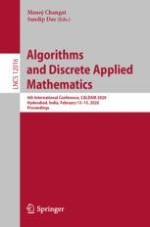2020 | Book
Algorithms and Discrete Applied Mathematics
6th International Conference, CALDAM 2020, Hyderabad, India, February 13–15, 2020, Proceedings
Editors: Manoj Changat, Sandip Das
Publisher: Springer International Publishing
Book Series : Lecture Notes in Computer Science
